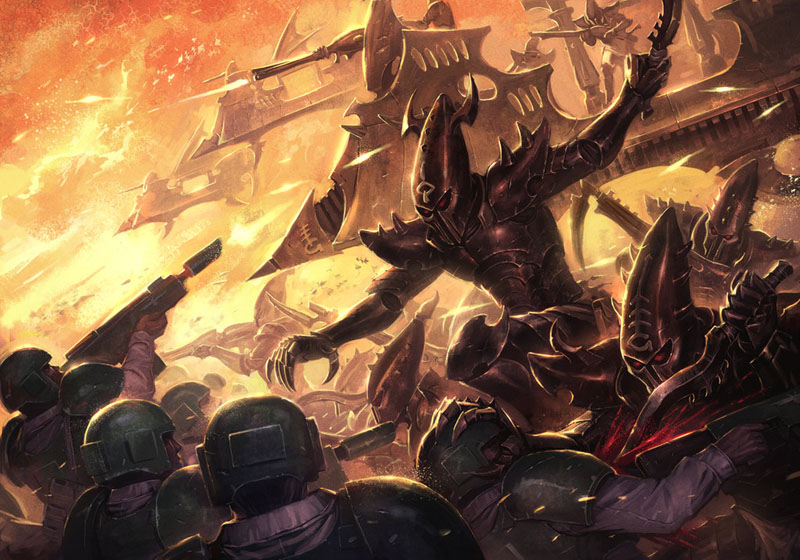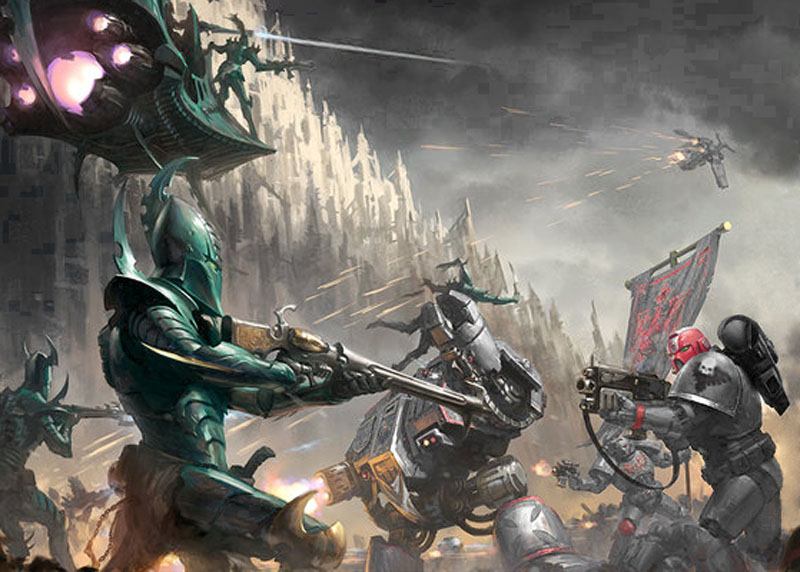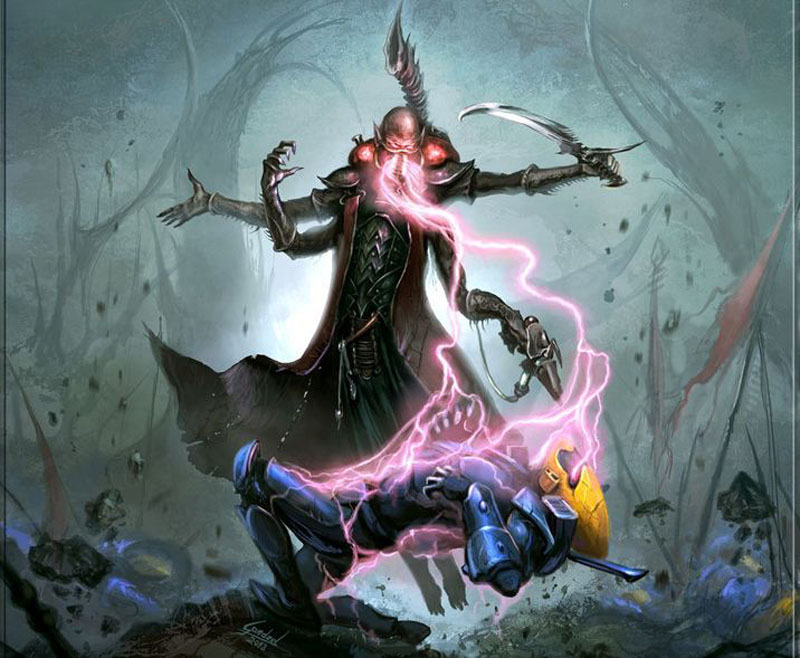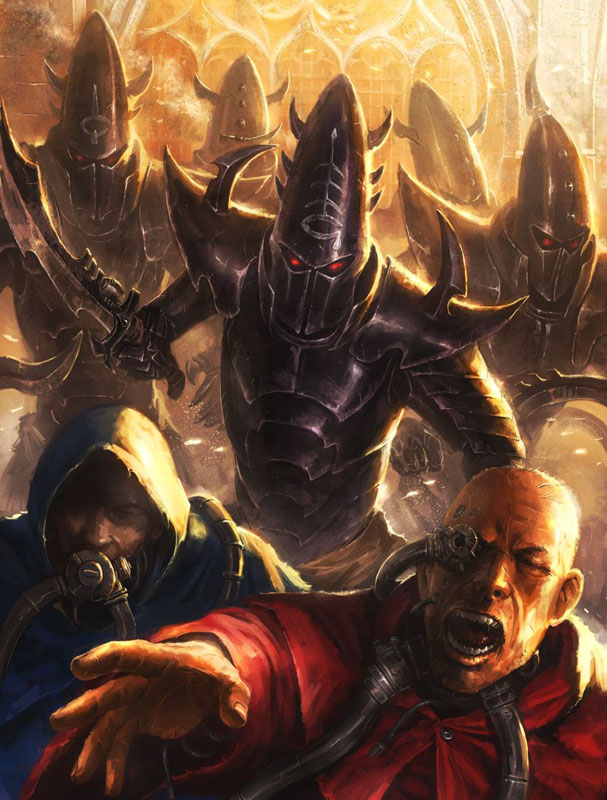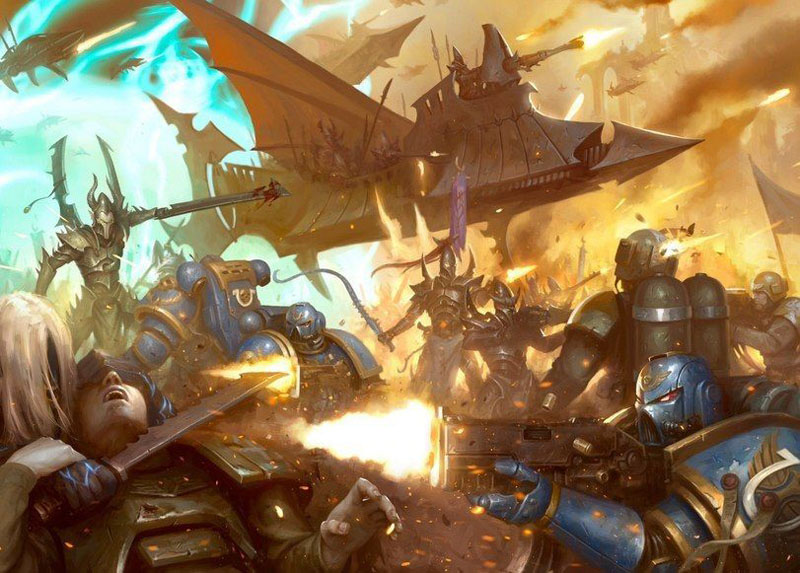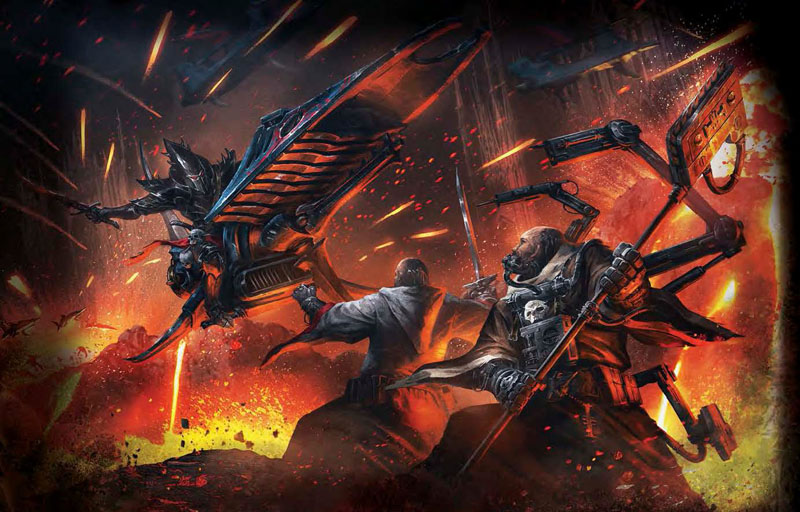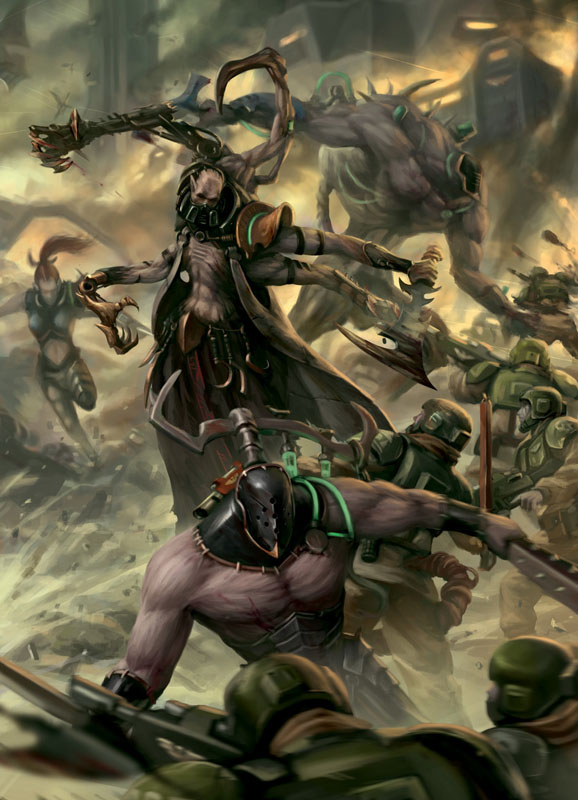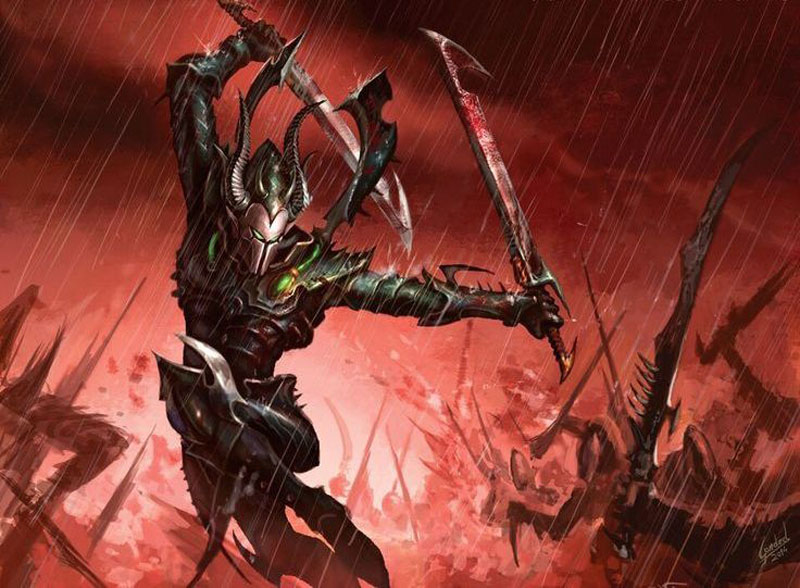We worried a lot about the Dark Eldar codex. Not so much for its playability, but for how fully and deeply it will represent the complex structure of this army, and how unusual and interesting the rules will be. So, what do we have?
Let’s start with major things. Power from pain table and combat drugs remained the same, which is nice. They were effective enough before. It's no joke - almost the whole army rerolls the charge range and hit on 2+ by the third turn. Now you even have the tools to strengthen these bonuses.
For example, all units belonging to the kabal of the Black Heart, consider the result of the PfP table to be 1 point higher. However, this is rather controversial, because the only close combat unit in Kabals is Archon (who, by the way, now shares classic reroll of 1s to hit). But, there is also a stratagem, allowing you to do the same, but for any units for 1CP. There is also a strategem, doubling the bonus from combat drugs. Given that the Warlord Succubus can be equipped with an artifact, each turn randomly injecting a new extra drug, and a trait that allows you to initially take two of them, you can get a warlord, pumped up with drugs so that it makes high even enemy units.
Why are we talking about the traits of kabals and witchcults separately? Because (and this is the most global innovation of the codex), now there are, in fact, three separate armies within the same codex. Each has its own abilities, traits, unique stratagems (together with the common ones - 33, which is more than in any other codex), and artifacts. However, the ability of the army ceases to work if you have mixed, for example, kabal and coven in one detachment. (mercenaries, such as Incubi or Scourges don’t count). At the stage of rumors, it sounded like a ban on playing a mono-army, and it was very stressful. But this problem has a very original solution.
The Raiding force rule gives you 4 command points if there are 3 patrol detachments in the army, and 8 if there are 6 of them. The problem is solved! It's even more profitable than taking a classic battalion. Considering how cheap the Dark Eldar units are, it is not difficult to recruit such an army. And it’s only the matter of taste – in what proportion to mix covens, kabals, and witchcults. And you can still attribute different abilities to each of them. Moreover, for just 1CP you can give Warlord traits to one Haemonculus and one Succubus, if you already have an Archon as a warlord. It turns out, indeed, several full-fledged armies in one.
Let’s proceed from quantity to quality. With rare exceptions, all the «obsessions» of the armies do work. The Kabals have range of shooting increased by 6 inches. Reroll of 1s to wound for the poisoned (that is, practically, everything) and for the melee weapon. Reroll of 1s for rapid-fire weapons, ignore the cover and +3 to the movement of the flying units (i.e., transports), and, attention, to the units in them. Perhaps, the latter looks most promising, given the old proven tactics of using mass kabalites in Raiders. By the way, they got back Splinter racks, which now give an additional hit on 6+. Add here a classic stratagem allowing to arrive via deepstrike, and you’ll get a perfect solution against infantry units.
Witchcults have improved, perhaps, most of all. Not only because witches received +1 attacks in the profile and 6 + + from shooting. But because belonging to a particular cult, one can get one more attack, Charge after advance, or +1 to Strength and limited morale losses. At the same time, special weapons have changed quite a bit - the shardnet now forces the opponent to roll D3 when trying to escape from close combat, while you are still rolling D6. As a result, we get very fast and cheap teams that produce a decent number of attacks, which can damage even close combat specialists.
Strengthening of the covens is not so significant. But they were already pretty good. 4 ++ for all units (perhaps the most needed), increasing the AP, and minus to the enemy leadership. Traditionally tough units have become even more tenacious. Also, we should mention a stratagem which makes it possible to target a character, wherever he is. Remember that for example, Talos can carry some powerful guns...
Of course, there are some drawbacks. Improved versions of troops have disappeared. And if, hardly anyone remembers Blood brides, then the blasterborn will be mourned for a long time. Theoretically, you can take these units from the index, but sometimes it’s not allowed. And you would like to take them - the blasters are now improved from D3, to full D6 damage.
In fact, the codex still has a lot of interesting things. Strategems provide solutions to almost any combat situation and return many mechanics lost with the fifth edition to the game. And this is the rare case when you can seriously count on stratagems, because you will have a lot of combat points. Therefore, the answer to the question of whether it was possible to make this codex diverse and interesting is definitely, yes. However, the question of playability is still relevant. The army played quite well with the index, and the codex definitely made it stronger, reducing the cost of many units and adding opportunities. However, it is quite complex, and it offers quite a lot of solutions, so it’s difficult to say whether Dark Eldar will rush into T1 without playtests. But the chances are high.
